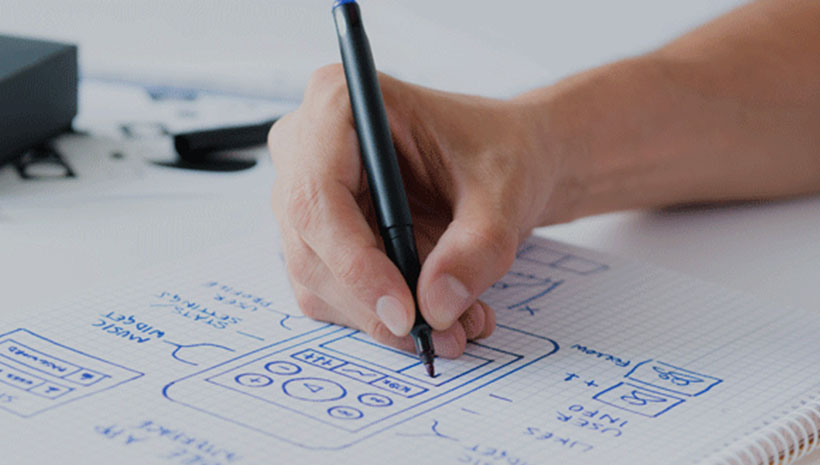|Muhammad Huzaifa
User Interface (UI) design has come a long way since the
early days of computing. What started as simple
text-based commands has evolved into sophisticated
graphical interfaces that are intuitive, visually
appealing, and highly functional. This blog explores the
evolution of UI design, the trends that have shaped it,
and predictions for the future.
Early Beginnings: Text-Based Interfaces
In the 1960s and 70s, user interfaces were predominantly text-based. Users interacted with computers through command-line interfaces (CLI), requiring knowledge of specific commands. This was far from user-friendly, but it laid the groundwork for future innovations.

The Birth of Graphical User Interfaces
The introduction of the graphical user interface (GUI) in the 1980s revolutionized computing. Pioneered by Xerox PARC and popularized by Apple’s Macintosh and Microsoft’s Windows, GUIs made computers accessible to non-technical users. Icons, windows, and menus replaced text commands, enabling intuitive interactions through pointing and clicking.
The Rise of Web Design
The 1990s saw the emergence of the World Wide Web, bringing new challenges and opportunities for UI design. Web designers had to consider different browsers, screen sizes, and user behaviors. The focus shifted towards creating visually appealing, user-friendly websites. Cascading Style Sheets (CSS) and JavaScript became essential tools for web designers, allowing for more dynamic and interactive designs.
The Mobile Revolution
With the advent of smartphones in the late 2000s, UI design faced another significant shift. Designers had to adapt to smaller screens and touch-based interactions. This led to the rise of mobile-first design, prioritizing mobile users in the design process. Responsive design techniques ensured that websites looked good and functioned well on any device, whether it be a smartphone, tablet, or desktop.
Trends in Modern UI Design
Several trends have emerged in modern UI design, shaping how interfaces are created today:
- Minimalism: Simplified, clean interfaces that prioritize content and reduce distractions.
- Dark Mode: An alternative color scheme that reduces eye strain and conserves battery life on OLED screens.
- Neumorphism: A blend of skeuomorphism and flat design, creating soft, 3D-like interfaces.
- Voice User Interfaces (VUIs): Interfaces that allow users to interact with devices using voice commands, popularized by smart assistants like Siri and Alexa.
- Augmented Reality (AR) and Virtual Reality (VR): Immersive interfaces that blend the physical and digital worlds, offering new ways to interact with technology.
Predictions for the Future
Looking ahead, several trends and technologies are poised to shape the future of UI design:
- AI and Machine Learning: Personalized and adaptive interfaces that learn from user behavior to offer customized experiences.
- Gesture-Based Interfaces: Expanding beyond touch to include gestures and motions for a more natural and intuitive interaction.
- Biometric Authentication: Seamless and secure login experiences using facial recognition, fingerprint scanning, and other biometric technologies.
- 5G Connectivity: Faster internet speeds enabling richer, more responsive, and interactive user experiences.
- Sustainable Design: Eco-friendly interfaces that consider energy consumption and environmental impact.
The evolution of UI design is a testament to the ever-changing nature of technology and user expectations. From text-based commands to immersive AR and VR experiences, UI design will continue to evolve, driven by innovation and the desire to create more intuitive, engaging, and user-friendly interfaces. As designers, staying abreast of trends and embracing new technologies will be crucial in shaping the future of UI design.

